Best Time to Visit Singapore for Festivals & Events
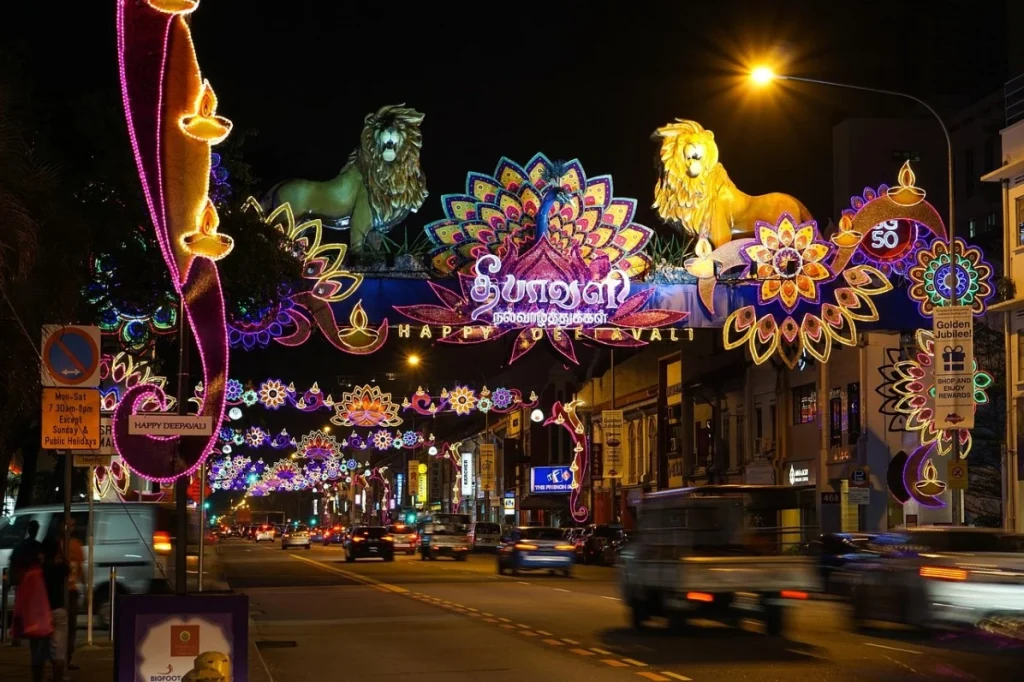
Singapore is one of those places teeming with life, with a little of everything for visitors all year round; a tiny island bursting with color, energy, and celebration every single month. From the spectacular street parades and celebratory cultural feasts to the international music festivals and mega shopping carnivals, Singapore never tires. But of course, the question travelers always want to know is — “When is the best time to visit Singapore?” The ‘best time’ will depend entirely on what kind of experience you are wanting to have. Whether that means immersing yourself in the glow of Chinese lanterns, or tasting your way through hawker stalls at the food festival, or dancing with revelers under fireworks on New Year’s Eve, we walk you through the best seasons and events that will have you planning your trip to Singapore with ease. And if planning your trip sounds like too much work, The Tarzan Way will make this effortless. It will help you build smart, experience-driven travel plans based on what you love, so you can concentrate on enjoying Singapore and not worrying about the logistics. Understanding Singapore’s Seasons Compared to many other countries of the world, Singapore does not really have four seasons; it has a tropical climate, which means it is warm and humid throughout the year. The average temperatures range between 25°C and 32°C, and it tends to rain briefly on occasion. There are two monsoon seasons: Northeast Monsoon (Dec–Mar): This typically produces more rain, and generally contains cooler winds. Southwest Monsoon (Jun–Sep): This typically produces lighter rains and breezy weeks. So, if you plan on going on a trip purely based on the weather, the best time to go out and experience all the sights is from February to April when the rain recedes, the skies clear up, and all the outdoor events commence. Pro Tip: Always take with you a random light rain jacket or umbrella — the rain can always be unpredictable, yet usually rather short-lived. You’d be surprised how many Singaporeans wait in their favorite cafés and malls to let the rain cease before making their return back outside. Major Festivals & Events Month by Month January–March: Cultural & New Year Festivities If you revel in vibrant traditions, these months are a sensory overload. The city turns into a sea of red and gold with Chinese New Year; Chinatown comes alive with lion dances, lanterns, and street food. The Chingay Parade is one of Asia’s largest street performances and takes over the city with floats, dancers, and costumes covered in sequins and electronics flashing lights. For a deeper look into a cultural experience there is Thaipusam, a Hindu festival where devotees carry ornate structures called kavadis in a spiritual act of devotion. It is often intense, spiritual and uniquely Singaporean. If you’re a first-time visitor, this period gives you a rich taste of the island’s multicultural energy. You can dive deeper into the city’s cultural neighborhoods with this detailed Singapore Travel Guide 2025 – Everything First-Time Visitors Need to Know. April–June: The Food & Shopping Lovers’ Season In April, the city exchanges the traditional festival atmosphere for a more gluttonous experience. This is the time when the Singapore Food Festival stages itself — a historic experience for any foodie. With amazing pop-up stalls, hawkers selling delicious food, Michelin-rated food events, and creative culinary learning experiences, you’ll be able to taste fare representing just about every corner of Asia, as well as the dishes you must try, such as laksa, chili crab, and satay. At the same time, The Great Singapore Sale takes over the malls and shopping districts. Orchard Road, Bugis, and Marina Bay become a shopping paradise filled with unending offers and deep discounts on luxury brands, electronics, and fashion. It’s also a great time for travelers looking for budget-friendly Singapore travel packages. You can find curated options here — Book Singapore Experiential Travel Packages Under $1000. Pro Tip: Combine the food festival with your shopping spree — hop between hawker stalls during the day and night markets for souvenirs in the evening. July–September: Music, Lights & National Pride If you would like to see the energetic side of Singapore, this is a great time to visit. In August, we have National Day, where the nation comes together in red and white with art shows, fireworks, and a sense of national pride. The celebration is in its finest form at Marina Bay with an exhilarating atmosphere. Next is the Singapore Night Festival, a creative extravaganza that transforms the Bras Basah-Bugis district into an outdoor gallery of visual art in the form of projections, performances, and immersive experiences. Also, September is when the Singapore Grand Prix happens, one of the great night races in Formula 1. Even if you are not a motor sport fan, you will love the concerts, parties, and energy of the occasion. Pro Tip: Hotels fill up quickly during the F1 season. Book early or stay in neighborhoods like Tiong Bahru or Katong for a quieter, authentic local experience. October–December: Festive Lights & Romantic Getaways This is possibly the most enchanting season of the year in Singapore. The month of October comes alive with Deepavali, where the streets of Little India are decorated with dazzling decorations, multicultural markets, and endless colorful sweet options. By November, Christmas on Orchard Street will turn the iconic boulevard into a glowing magical wonderland with lights, carols, and themed installations. Then, December will be the best month for couples, when the city is cozy and merry, and perfect for long romantic walks along the Marina Bay waterfront, or rooftop dinners with great views of the skyline. If you’re planning a couple’s escape, check out these Singapore Honeymoon Packages: Best Ideas & Itinerary for inspiration. Pro Tip: Visit during early December — you’ll catch both Deepavali lights and the Christmas charm without peak holiday crowds. Choosing the Best Time Based on Your Travel Style For Culture Seekers (Jan–Feb): Chinese New Year, Thaipusam, and Chingay Parade offer
12 Best Indian Spots for an Unforgettable Friends Trip
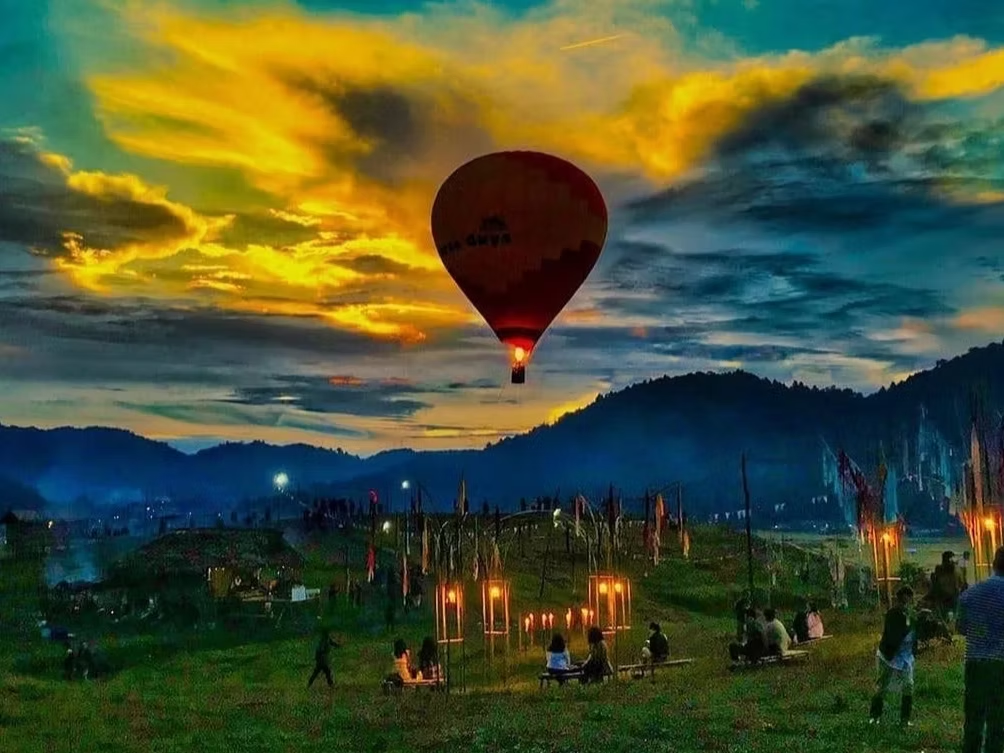
When you travel with friends, something special happens. It’s the laughter you share on a long road trip, the inside jokes you make over a simple meal, and the feeling of leaving all your worries behind to just hang out with your favourite people. Going on a trip with friends is the best way to relax, have fun, and make memories that will last a lifetime unforgettable Friends Trip. We’ve all been in a group chat where the planning starts out fun, but then the plan falls through. But what if it really happens this time? There are so many great places in India for all kinds of friend groups, whether you want to have fun, go on an adventure, or just relax. We can help you decide where to go on that epic friendcation you’ve been wanting to take. This list of the best places to travel with friends in India will help you make those plans happen. 1. Ladakh: The Best Place for an Adventure Photo Credit: Unsplash Ladakh is the perfect place for a group that loves adventure. Its beautiful landscapes include barren mountains, bright blue lakes, and dramatic high passes. The trip here is just as beautiful as the place itself, making it a great road trip. Great for friends who like: Long bike rides and road trips. Hard hikes like the well-known Chadar Trek. Camping outside with a clear, starry sky. Pro Tip: Renting bikes or one SUV for the whole group can be more fun and cost-effective. To avoid altitude sickness, which can quickly ruin a group trip, make sure everyone gets used to the high altitude in Leh for at least 48 hours. 2. Rishikesh, Uttarakhand: For Thrills and Chills Photo Credit: eUttaranchal Rishikesh is the perfect place for adventure and spirituality because it is on the banks of the holy River Ganga. During the day, you can push your limits, and at night, you can relax by the river. Great for Friends Who Like: Things that get your heart racing, like bungee jumping and white-water rafting. Camping by the river with music and bonfires. Going to the Ganga Aarti ceremony and checking out cool cafes. Pro Tip: If you’re going rafting or bungee jumping with a group, book your spots online. You can often get better deals and make sure that everyone has the same time for the activities. 3. Kasol, Himachal Pradesh: For a Relaxed Atmosphere Image Source: Ashwini Chaudhary Kasol is a small town in the Parvati Valley that is known as the “Amsterdam of India.” It has a very laid-back and chill vibe. Backpackers and nature lovers love this place because it has beautiful pine forests, a rushing river, and snow-capped mountains all around. Great for Friends Who Like: Simple hikes, like the one to Kheerganga. Hanging out in hippie cafes and eating Israeli food. Having fun together in nature. Pro Tip: While you’re in Kasol, take a short hike to the village of Chalal. There aren’t as many people there, and the Parvati River has some lovely places that are great for a group picnic. 4. Shillong, Meghalaya: For Music and Nature’s Wonders Image Source: Aenic Visuals Shillong is a beautiful hill station with a cool vibe. People call it the “Scotland of the East.” It has a great music scene, beautiful waterfalls, mysterious caves, and amazing living root bridges in nearby villages. Great for Friends Who Like: Seeing unique natural wonders like the clear rivers and living root bridges. Going to cool, unique cafes and listening to live music. Long drives through beautiful, foggy scenery. Pro Tip: If you want to see Shillong and the area around it, the best thing to do is rent a big taxi for the whole day. The drivers are usually great at giving directions and know all the best places to see. 5. Spiti Valley, Himachal Pradesh: For a High-Altitude Road Trip Image Source: Anmol Arora Spiti Valley is a cold mountain desert that has some of the most beautiful scenery in the world. This trip isn’t for the weak of heart, but it’s a great way to bond with your friends like nothing else. Great for friends who like: Driving off-road and on tough road trips. Going to old Buddhist monasteries. Taking pictures of dramatic, empty landscapes. Pro Tip: Most of Spiti has very little network connectivity. Before you leave, make sure to download maps that you can use without an internet connection and tell your family about your plans. 6. Gangtok, Sikkim: A Place to Have Fun and Learn About Culture Image Source: Bhaskar Palit Gangtok, the capital of Sikkim, is a clean, beautiful hill station that has the best of both Tibetan and Indian cultures. It is famous for its beautiful monasteries and stunning views of the Kanchenjunga mountain range. Great for Friends Who Like: Seeing beautiful monasteries and learning about Buddhism. Eating tasty Tibetan food like momos and thukpa. Travel on a budget with lots of cheap places to stay and eat. Pro Tip: If you can get permits, you should definitely take a shared jeep trip to Tsomgo Lake and Nathu La Pass. It’s a classic thing to do in Gangtok that is best done with friends. 7. Jaipur, Rajasthan: A Trip Fit for a King and Full of Colour Image Source: Dexter Fernandes Jaipur, also known as the “Pink City,” is a great place for friends who love history, culture, and taking great pictures. Jaipur is a colourful and interesting place to visit because of its grand palaces, strong forts, and busy markets. Great for friends who like: Visiting old forts and palaces. Buying colourful fabrics, jewellery, and crafts. Finding places to take pictures that look good on Instagram. Pro Tip: Instead of just going to the forts, book a group activity like a cooking class or a block-printing workshop to have a more hands-on cultural experience together. 8. Lonavala, Maharashtra: A Quick Trip Image Source: Animesh Das Lonavala is a great place for
The Complete Guide to Coorg: Discovering India’s Coffee Capital
Where Mist Meets Aromatic Plantations: An Introduction Imagine waking up on a cool, foggy morning with the strong, intoxicating smell of roasted coffee beans in the air. The soft sound of birds chirping adds to the peacefulness of the scene as rolling hills covered in many shades of green fade into a soft blanket of fog. This isn’t a dream; it’s just another morning in Coorg, which is known as the “Scotland of India.” Kodagu is the official name for this beautiful hill station in the Western Ghats of Karnataka. It is a place that soothes the soul and wakes up the spirit of adventure. Coorg is a great place for travellers who want to get away from everyday life. It has lush landscapes, waterfalls, exciting activities, and a rich, unique culture. This guide is meant to be your one-stop shop for everything you need to know about the coffee estates, the food, and the wild, untamed beauty of the area. We’ll go over everything you need to know to plan a trip that will be both relaxing and unforgettable. The Tarzan Way brings to life immersive storytelling journeys that let you really get to know Coorg’s culture and nature, making sure that your experience is both real and responsible. Are you ready to get lost in Coorg’s green paradise? Let’s start our trip to India’s coffee capital. Key Takeaways Coffee Paradise: Learn about Coorg’s identity as India’s coffee capital, including how to visit large estates, learn about the “bean to cup” process, and taste real coffee. Natural Wonders: Discover the breathtaking scenery of Coorg, from the grand Abbey and Iruppu Falls to the sweeping views from Raja’s Seat and Mandalpatti. Adventure Hub: Find out about exciting things to do, like white-water rafting on the Barapole River, climbing Tadiandamol (Coorg’s highest peak), and going on wildlife safaris in Nagarhole National Park. Explore the world of the Kodavas, the local warrior group, and learn about their unique culture and food. Enjoy unique foods like Pandi Curry and Kadumbuttu, and stay in a traditional homestay where you’ll be treated like family. Guide to Practical Planning: Get all the important details about when to go, how to get to Coorg, where to stay, and a sample itinerary to help you plan your trip. Travel Responsibly: Learn how to explore the Western Ghats in a way that protects its natural beauty for years to come. 1. The Heart of Coorg: Visiting Coffee Plantations That Smell Good Credit: Unsplash You can’t talk about Coorg without talking about its lifeblood: coffee. The Robusta and Arabica types of coffee grown in this area are among the best in India. Huge coffee estates cover the land, and tall silver oaks covered in pepper vines often cast shade over them. Coming here is a lesson in and of itself. Most plantations have guided tours where you can walk through the bushes, learn how to tell the difference between different beans, and see the whole process, from picking the ripe red berries to pulping, drying, and finally roasting them to perfection. The best part of the experience is the tasting, where you can enjoy the freshest cup of coffee you’ve ever had. Recommended Plantations: Tata Coffee Plantation Trails: Offers a “bean to cup” tour that is both luxurious and in-depth. Evolve Back (Orange County) is a high-end resort with its own plantations that lets you fully experience the area. Mercara Gold Estate and Dubare Elephant Camp: You can go on a coffee and spice tour and also get to know elephants. Advice for Travellers The coffee blossom season, which lasts from March to April, is magical because the estates are covered in sweet-smelling white flowers. The best time to see the plantations busy is during the harvest season, which runs from November to January. For the best taste and a fair price, buy your coffee straight from the estate. Quick Facts Arabica and Robusta are the two main types. The nickname is “Coffee Capital of India.” Paired Crop: Coffee and pepper vines are often grown together, with the same trees supporting both. 2. Chasing Waterfalls and Peaks Covered in Mist: Coorg’s Natural Wonders Credit: Unsplash The beauty of Coorg is raw, dramatic, and completely captivating. The Western Ghats’ rolling hills have given it stunning views and amazing waterfalls that come to life, especially during the monsoon season. Abbey Falls: This is one of Coorg’s most famous waterfalls and is close to Madikeri. Water from the Kaveri River flows down a rock face from a height of 70 feet into a calm pool. A bridge that hangs down gives you a great view. Iruppu Falls is a beautiful waterfall with many levels in the Brahmagiri Hill range. People also think of it as a holy place, and they think the water there has healing powers. Raja’s Seat: This beautiful garden in Madikeri was said to be the Kodagu kings’ favourite place to watch the sunset. It has amazing views of the misty valleys and rolling hills all around it. Mandalpatti is the best place to go for an adventurous, off-road jeep ride with 360-degree views of the Western Ghats. The view from the top, especially at sunrise, makes the bumpy ride worth it. Why does it draw tourists?? Because it’s nature at its most basic level. The powerful waterfalls, peaceful viewpoints, and lush greenery make this a great place to get away from it all and take pictures. 3. The Call of the Wild: Adventures with animals and hiking Credit: Unsplash The rough terrain and thick forests of Coorg make it a great place for people who want to have fun. There’s something for every thrill-seeker, whether you want to climb a mountain or see animals in the wild. Trekking: Coorg has some of the best trekking trails in Karnataka Tadiandamol is the highest peak in Coorg, rising 1,748 meters. The trek takes you through thick Shola forests and wide grasslands, and the views from the top are amazing. The
Best Vietnam Group Tours for Young Travelers
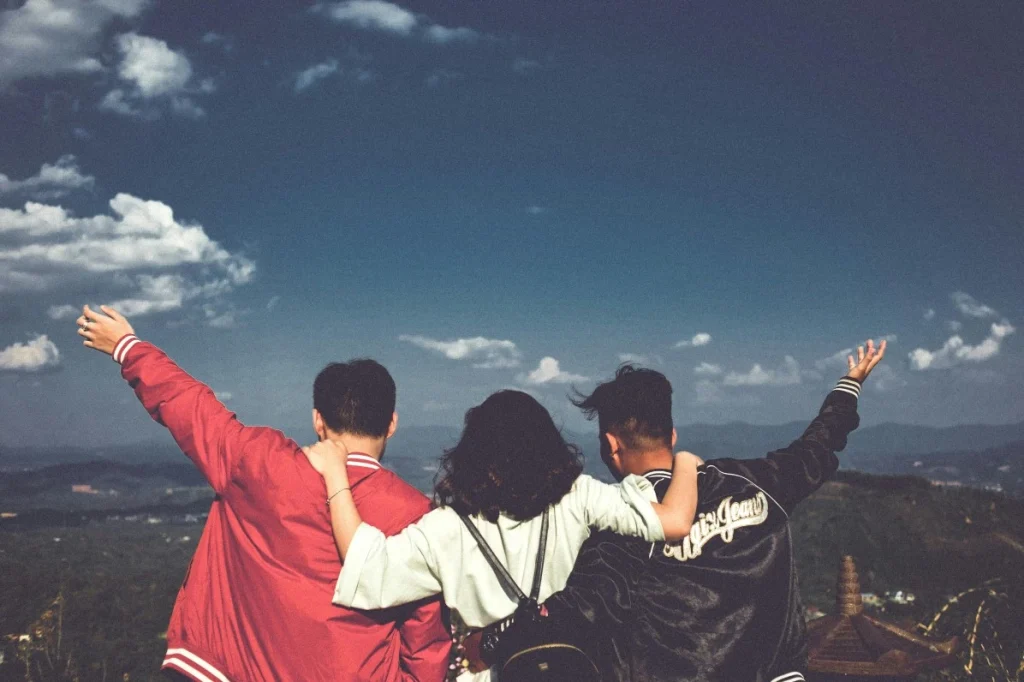
Vietnam is not just a destination – it’s a human connection experience. Between the night markets of Hanoi and the rice terraces of Sapa, there’s magic waiting to be explored at every corner of the country. And when travelers share those experiences with fellow wanderers, they become stories you will tell for the rest of your life. For youthful knowledgeable travelers who want some adventure, culture, and maybe a bit of chaos, Vietnam group tours perfectly balance independence and fun as you meet people from around the world, all there to experience the food, history, and hidden treasures that Vietnam has to offer. Whether you’re traveling alone or with some buddies, participating in a well-planned group journey means you can spare the strain of planning and get right to the fun of Vietnam – The Tarzan Way can offer simple customizable itineraries to best accommodate your vibe and budget. Why Vietnam is Perfect for Young Travelers Budget-Friendly Yet Experience-Rich You do not need a lot of money to have a pleasant visit to Vietnam. Food from street stalls can be as low as one dollar, local trains provide a great way to see scenery while also being inexpensive, and you can find hostels throughout the country that provide clean environments and a social scene for backpackers. A two-week trip to Vietnam for under $800, including accommodations, intercity travel, and tours, is easy – a small fraction of what you would spend in Europe or Japan. Vibrant Social Travel Culture Every major location in Vietnam – from Hanoi’s Old Quarter to Hoi An’s riverside bars – relies on social energy. Travelers connect over the same meals, the same hostel pub crawls, the same once-in-a-lifetime motorbike rides, and the same sleepless overnight trains. Most group tours are comprised of backpackers, students, and young professionals in the 18–35 demographic and come with built-in energy and casual atmosphere. Adventure at Every Turn Few countries present so much diversity in such a small package. You can take a trip to Ha Long Bay and cruise through limestone cliffs, trek through terraced rice fields in Sapa, explore caves in Phong Nha, and then party at the beaches in Phu Quoc – all in one trip. Top Group Tour Routes for Young Travelers 1. Northern Vietnam Explorer – Hanoi, Ninh Binh, Sapa & Ha Giang This area is the heart of Vietnam. This is the ideal destination for the adventurous types who appreciate rough nature, real culture, and scenic drives. Hanoi: Begin in the capital city among narrow streets full of scooters and food stalls. Make sure to try egg coffee and Bia Hoi nights with the locals. Ninh Binh (Tam Coc): Sometimes referred to as “Ha Long Bay on land,” Ninh Binh is a beautiful destination for boat rides through limestone karsts and golden rice fields. Sapa: Trekking through villages of different ethnic minorities such as Hmong and Red Dao; overnight homestays may provide an interesting angle to local life. Ha Giang Loop: The best motorbike trip ever! With winding roads around mountains and valleys by the Chinese border, this four-day ride may be one of the most picturesque rides in Asia. Most northern group tours last 7–10 days, offering a mix of trekking, homestays, and road trips with small, friendly groups. Pro Tip: Pack warm layers — mountain weather changes fast! Rent a motorbike with a guide for the Ha Giang Loop; it’s safer and way more fun. 2. Central Vietnam Adventure – Hue, Hoi An & Phong Nha In Central Vietnam, you’ll find ancient culture, stunning coastlines, and captivating caves. Hue: It was once an imperial capital and is home to royal tombs, temples, and the Perfume River. Hoi An: The most beautiful town in all Vietnam – famous for colorful lanterns that light the streets, many tailor shops, and restaurants along the river. Phong Nha-Ke Bang National Park: A playground for adventure seekers. Visit enormous caves like the Paradise Cave, or zipline into the Dark Cave and enjoy a mud bath inside! Most tours in the central region typically include cycling tours, caving activities, and beach parties, which can offer a nice combination of a relaxing vacation, and an adventure holiday. Pro Tip: Visit Hoi An’s Lantern Festival if your trip aligns — it’s magical. Book cave tours in advance, as Phong Nha’s adventure slots fill up quickly. 3. Southern Escape – Ho Chi Minh City, Mekong Delta & Phu Quoc The south is all about contrasts – bustling metropolises versus quiet rural areas. Ho Chi Minh City (Saigon): Experience the buzz of nightlife, rooftop bars, and historical locations like the Cu Chi Tunnels. Mekong Delta: Glide through floating markets, coconut farms, and stilt houses – the true essence of rural Vietnam. Phu Quoc Island: End your journey on the velvet beaches that rise out of the azure water. Swim, snorkel, kayak, and watch the sun drift into the ocean. Southern Vietnam group tours work for socially minded travelers focused on history and hedonism – visiting war museums during the day then going to bustling markets by night. Pro Tip: Try a night cruise on the Saigon River for skyline views. In the Mekong, start early to catch the floating markets before they close by noon. Offbeat & Themed Group Tours for the Curious Traveler Cultural Immersion Tours Live with local families in Mai Chau or Pu Luong, learn to cook pho in Hoi An, or join rice harvest festivals in the north. These tours are immersive, sustainable, and deeply meaningful. Adventure Expeditions Trek across remote highlands, camp under the stars, or kayak through Lan Ha Bay – a quieter and cleaner alternative to Ha Long Bay. Perfect for thrill-seekers. Food & Nightlife Tours From bun cha and banh mi to rooftop cocktails in Saigon, food tours in Vietnam are a sensory overload. Some tours even include cooking classes, bar crawls, and live music nights. Motorbike Road Trips The Ha Giang Loop and Hai Van Pass are legendary among bikers. Join a
Spine-Chilling Road Trips: India’s Most Haunted Highways

Road trips are full of laughter, freedom, and lifelong memories. But what if there was a hint of mystery and excitement in your next journey? Greetings from India’s haunted highways, where the unknown meets beauty. These highways are more than just roads; they are legends, from the foggy ghats of Maharashtra to the spooky forests of Tamil Nadu. We’ll walk you through some of India’s most haunted roads in this 2025 haunted travel itinerary, along with some terrifying anecdotes, useful travel advice, and even some insider secrets to make your spooky road trip memorable and safe. 1. Kashedi Ghat, Maharashtra – The Mysterious Mumbai-Goa Stretch Kashedi Ghat, situated on the picturesque Mumbai-Goa Highway, appears serene by day but becomes mysterious at night. Locals claim that ghosts roam around here, particularly in the area close to the wooded turns. Drivers have frequently reported seeing figures disappear into thin air or hearing odd knocks on their car doors. Why it’s famous: Unexpected nighttime temperature drops. Tales of vanishing tourists or ghostly women asking for help. Dangerous hairpin turns with thick fog. This road is one of the most difficult in Maharashtra due to its sharp curves, even without the ghosts. Pro Tip: Don’t drive here after dusk. If you do, drive slowly, avoid stopping in isolated areas, and keep your windows slightly open for airflow. 2. Khooni Nala, Jammu–Srinagar Highway – The Valley of Ghostly Whispers Khooni Nala, which translates to “bloody stream,” is home to a number of terrifying legends. Residents think the ghost of a woman who passed away a long time ago still haunts this place. People who drive by at night say they see a shadowy figure by the road or hear her crying. What adds to the fear: The sound of running water echoing through mountains. Low visibility and unexpected fog. Some patches have no mobile network. In spite of the myths, this route is among the most picturesque in North India, with lush hills and waterfalls all around. Pro Tip: Make frequent rest stops and travel during the day. Before you depart, you should always let someone know your route. 3. Baytakhol, Goa – The Woman Who Screams in the Night Although Goa is well-known for its beaches and parties, not many people are aware of Baytakhol, the haunted area between Dhavali and Borim. Numerous residents claim to have seen a woman standing in the center of the street. She vanishes when drivers swerve or try to stop, shocking them or even causing them to lose control of the vehicle. What makes it scarier: The road is silent and encircled by thick trees, which heightens the spooky feeling. It is common to hear unexplained screams late at night. Some say headlights flicker or engines stall near the spot. Pro Tip: Avoid distractions like loud music, never drive alone, and keep your headlights on high beam if you’re planning a haunted nighttime drive. 4. Delhi Cantonment Road – The Lady in White Saree There are horror tales even in the center of the capital. One of the spookiest spots in the city is Delhi Cantonment Road. A “lady in white” who unexpectedly shows up on the road and requests a lift is a common topic of conversation. According to some, if you don’t stop, she will run alongside the car. Why it’s talked about: Numerous eyewitness ghost stories from motorcyclists and drivers. Despite being in a metro area, there are isolated sections. Sudden light failures or engine stalls near haunted turns. Pro Tip: Take the main path. Don’t stop at night if you see someone indicating that you should. Continue to drive steadily and calmly. 5. Thamarassery Churam, Kerala – The Whispering Ghats of Wayanad Thamarassery Churam, a breathtaking ghat pass with eleven sharp hairpin bends, is located between Kozhikode and Wayanad. Despite its beauty during the day, it is rumored to be haunted at night. Passengers describe shadows pursuing their cars and whispers in the wind. According to local legend, the forest here is still guarded by the spirit of a tribal chief. What you’ll experience: Beautiful misty mountains hiding ghostly legends. Even on warm nights, there are sudden chills. For safety, locals light lamps at specific turns. Pro Tip: Play some relaxing music if you’re driving here at night, and avoid stopping to take pictures close to the bends. 6. NH-209, Tamil Nadu – The Forests that Watch You There is a spooky reputation associated with the road that runs through dense forests between Bengaluru and Coimbatore. Travelers have reported seeing flickering lights deep within the dense forest that encircles NH-209. Some even claim that when they got out of their cars, they heard footsteps. Why it feels haunted: Long, lonely stretches without human settlements. Calls from animals that sound like human screams. Patches of sudden fog where visibility is completely zero. Despite the ghostly tales, it’s also one of the most breathtaking drives in South India, ideal for daring adventurers. Pro Tip: Carry snacks and water, and keep a flashlight close at hand. Because wildlife can be dangerous, stay away from exploring the interior of forests. 7. Igorchem Bandh, Goa – The Road That’s Haunted Even in Daylight The majority of haunted stories take place at night, but Goa’s Igorchem Bandh is an exception. Even in the sun, the road feels unsettling, according to locals. People report feeling lightheaded or sensing someone walking next to them at noon. Strangest facts: During the day, people can hear soft murmurs. Near some trees, travelers occasionally faint. Priests in the area advise against crossing alone between 2:00 and 3:00 PM. Pro Tip: If you’re curious, visit with a local guide. Avoid visiting during the hottest times of the day and drink plenty of water. Planning Your Haunted Road Trip (2025 Edition) Make careful plans if you’re prepared for India’s haunted road trip. Despite the excitement of these roads, safety always comes first. Here’s how to plan your haunted road trip: Drive during the day: Although thrilling,
Hidden Gems in Vietnam Beyond Hanoi & Ho Chi Minh

There is something wonderful about Vietnam: the smell of strong coffee in the morning, mist hovering over the green rice fields, and roads that go on forever, winding through mountains and fishing villages. Most visitors stop in Hanoi or Ho Chi Minh City. But if you dig a little deeper, you might find a version of Vietnam that seems slower, more local, and even more beautiful. If you’re planning your first trip to Vietnam and want to wander off the beaten path a bit, this guide will help you find the hidden gems across the country: the quiet towns, untouched islands, and truly soulful landscapes that somehow never make it onto a postcard. And, if you’re looking for some help creating a route that perfectly fulfills your travel style, The Tarzan Way, an AI-powered personalized Vietnam trip planner, can make that process easier. Why Go Beyond Hanoi & Ho Chi Minh? Avoid the crowds: Vietnam’s metropolitan areas are lively, but you’re able to connect with locals and experience more open space by venturing into lesser-known areas. Experience real Vietnamese life: In the countryside and on the coast, you will see ordinary life, like farmers tending to rice paddies, fishermen mending their nets, and children waving as you drive by. Find peace and beauty: You’ll then find tranquil places to explore; misty valleys, limestone mountain peaks, and wide, empty beaches without the map. Affordable exploration: Many off-the-beaten-path regions are more affordable than standard travel and more authentic by offering unique homestays or small eco-lodges. Hidden Gems to Add to Your Vietnam Travel Itinerary Each of the below destinations brings a different side of Vietnam to life – from wild mountains to untouched islands and calm lakes. Ninh Binh (Trang An & Tam Coc) Often called “Halong Bay on land,” this peaceful area offers limestone karsts rising from rice paddies. Take a sampan boat through caves and temples surrounded by calm waters. Perfect for travelers seeking slow mornings and quiet evenings in nature. Ha Giang Loop & Dong Van Plateau One of Vietnam’s most breathtaking drives, full of winding mountain roads and deep valleys. Ride or join a guided loop tour to see ethnic minority villages, local markets, and cliff-edge viewpoints. Ideal for adventure seekers planning their Vietnam travel itinerary. Phong Nha–Ke Bang National Park Home to some of the world’s largest caves, like Son Doong and Paradise Cave. Try a jungle trek, river cave exploration, or a boat ride into the dark cave systems. Great stop for travelers mixing adventure with natural wonders. Ba Be National Park A serene freshwater lake surrounded by dense jungle and waterfalls. Stay with local Tay families in stilt houses and enjoy home-cooked meals. Adds a peaceful pause to your Vietnam trip itinerary. Pu Luong Nature Reserve Think of green rice terraces, wooden bridges, and quiet trekking trails. Perfect for those who want a rural experience without tourist crowds. Great alternative to Sapa if you prefer offbeat adventures. Quy Nhon & Phu Yen Vietnam’s underrated coastal duo is known for turquoise waters and local charm. Enjoy empty beaches, fresh seafood, and hidden rock formations like Ganh Da Dia. Add them to your Vietnam travel planner if you love sea views without resort crowds. Con Dao Islands A small archipelago far from the mainland, famous for its clear waters and coral reefs. Ideal for snorkeling, diving, and quiet romantic escapes. Also holds historical significance as a former prison island – a mix of history and serenity. Ban Gioc Waterfall (Cao Bang) One of Southeast Asia’s most stunning waterfalls, right on the border with China. Surrounded by karst peaks and green valleys, it’s a photographer’s dream. Reachable by scenic routes that make for a great road trip addition. Dalat’s Countryside Trails Beyond the town center, explore coffee plantations, flower farms, and waterfalls. The cool mountain weather and pine forests make it perfect for couples or solo travelers seeking calm. Mekong Delta’s Lesser-Known Routes Skip the crowded floating markets and visit smaller provinces like Tra Vinh or Ben Tre. Take a boat through narrow canals, cycle through coconut groves, and meet Khmer communities. A gentle, cultural side of southern Vietnam. Planning Practicalities & Insider Tips Best time to visit: Overall, travel is best from November through to April when the weather is dry and pleasant. If you want more seasonal insights, refer to our Best Time to Visit Vietnam in 2025 for Travelers to work out which routes are most suitable. Transport: Domestic flights and trains are very effective for long routes, while you can rent a motorbike or use the local bus for shorter distances. Where to stay: Homestays and eco-lodges offer the most authentic, local experience as well as hospitality. Budget: Travelling in Vietnam is very manageable. Even in offbeat locations, you will find decent accommodation at a good price. Packing: Bring light clothing for the south and layers for the north. If you are travelling during the monsoon season, don’t forget to bring a rain jacket. Local etiquette: Smiling is encouraged, always remove your shoes when entering homes, and always show respect to elders. If trip planning feels overwhelming, a tailored itinerary from The Tarzan Way can simplify your route while keeping it flexible and personalized. Offbeat Vietnam Itinerary Ideas 7-Day Northern Escape Day 1–2: Hanoi arrival and day trips to Ninh Binh. Day 3–5: Explore Ha Giang Loop. Day 6: Relax in Ba Be National Park. Day 7: Return to Hanoi for departure. 10-Day Coastal Trail Day 1–2: Fly to Da Nang, visit My Son ruins or Hoi An. Day 3–5: Head to Quy Nhon and Phu Yen for quiet beaches. Day 6–8: Fly to Con Dao Islands. Day 9–10: End with a cultural evening in Ho Chi Minh City. 2-Week Explorer’s Route North: Hanoi → Ha Giang → Ba Be → Phong Nha Central & South: Dalat → Quy Nhon → Mekong Delta (Ben Tre or Tra Vinh) A perfect balance of nature, culture, and coastline. Responsible & Local Travel Support small family-run
Dubai Desert Safaris & Offbeat Experiences You Can’t Miss

There is something magical about the desert that words cannot express—the endless golden sand dunes, the stillness of the sun sinking into the horizon, and the sparkling stars that twinkle down on you when the sun goes down. Most people think of Dubai as luxury shopping, iconic skyscrapers, and city life—but go a little further out of the city, and another world unfolds. And while dune bashing and camel rides are some of the most popular activities to do in the desert, there are other experiences you will remember long after your trip is over. If you are planning a Dubai holiday, or are simply looking for a unique way to enjoy the desert, The Tarzan Way can assist with crafting experiences based on the type of adventures you’ve always dreamed of—whether it resembles an adventure, a romantic getaway, or simply a moment to unwind and relax. Why Dubai’s Desert Is More Than Just a Safari Many people tend to believe that a desert trip in Dubai is simply a few hours of dune bashing, an obligatory camel selfie, and a quick dinner at a camp. In reality, it is an opportunity to very literally enjoy the slow passage of time, where every moment seems like a beautiful moment in cinema. Romantic Desert Moments A romantic early morning camel ride two hours before sunrise reveals soft pink and orange skies, while evenings bring golden sunsets and the whispers of Bedouin stories carried by the wind. A Space for Peace, Romance, and Adventure Dubai’s desert offers a space to find peace, celebrate romance, or seek adventure — far beyond the typical ride experience. Beyond the Usual Safari From sandboarding and falcon shows to stargazing under an infinite night sky or sharing a private dinner in the dunes, every moment adds depth to your Dubai trip itinerary. If you love uncovering hidden gems, also check our post on Top Free & Offbeat Things to Do in Dubai for ideas beyond the usual tourist trails. Top Dubai Desert Experiences Beyond the Standard Safari Here’s where your desert adventure goes from ordinary to extraordinary: 1. Sunrise & Sunset Photography Tours A photographer’s dream can be found in the desert—the early-morning and late-afternoon light turns the dunes into limitless gold, pink, and purple sand dunes that could be captured from sunrise to sunset. Many tour operators have specialized photography excursions, where you have an opportunity to take the best photos possible. Another opportunity for truly incredible images and peacefulness is through a quiet group camel adventure at dawn, which, even if it did not end with beautiful images, is often rare to find in a city. 2. Camel Trekking & Bedouin Cultural Encounters Camel rides go beyond a travel cliché—they take you back in time. Some tours take you far into the dunes to meet Bedouins, learn about traditional crafts, and enjoy stories around a fire. These cultural experiences are especially great for travelers who want to add another layer to their Dubai travel itinerary. 3. Stargazing & Nighttime Desert Magic When the sun goes down, the nighttime desert sky turns into a shimmering blanket of stars. Desert night activities include guided stargazing, private dinners under the stars, and sometimes, even overnight stays in opulent tents! The cool desert night, far away from city lights, gives a peacefulness that no other place possesses. 4. Luxury Desert Camps & Romantic Experiences Dubai’s desert camps are very romantic options for couples or honeymooners. Imagine secluded dinners, traditional singing, and comfy lounges nestled in the dunes, offering unique experiences for your Dubai tour honeymoon package. You can even combine the desert camp with hot-air balloon rides or private quad biking to create a mix of romance and adventure. 5. Adventure Sports Beyond Dune Bashing The desert can be much more than a serene landscape—there’s also adrenaline. Activities like sandboarding, quad biking, and dune buggies inject excitement into your Dubai trip. If you’re preparing a Dubai trip guide to suit both rest and adventure, these inclusions guarantee all members of your traveling group have exhilarating memories to share long into the future. Planning Your Desert Trip: Tips & Insider Advice While the desert is mesmerizing, preparation makes all the difference. Timing is everything: The cooler months (October–April) are ideal. Early morning and late afternoon offer the best light for photos. Choose Your Experience Wisely: From luxury camps to adventure sports, pick what suits your style. Clothing & Essentials: Light layers, comfortable shoes, sunblock, and water are must-haves. Nighttime can get chilly, so pack accordingly. Booking & Tour Operators: There are an abundance of tour operators, Dubai travel agents, and travel agencies in Dubai; however, for a tailored, hassle-free experience, a smart option is a personalized itinerary planner like The Tarzan Way, which suggests options curated to your desires. For budget travelers, also check Dubai Travel on a Budget – Is It Possible to learn how to enjoy desert adventures without overspending. Ample Desert & City Combined Itinerary Here’s a mix of city and desert for a balanced Dubai trip: 3-Day Quick Escape: Day 1: Arrive in Dubai, explore city highlights like the Dubai Mall and Burj Khalifa. Day 2: Morning desert camel ride, sunset photography, and luxury dinner at a desert camp. Day 3: Adventure sports (sandboarding/quad biking) followed by an evening dhow cruise. 5-Day Extended Adventure: Day 1: City exploration and cultural tours. Day 2: Desert sunrise photography and Bedouin cultural experience. Day 3: Luxury desert camp overnight with stargazing. Day 4: Explore offbeat city experiences and markets. Day 5: Relaxation, optional hot-air balloon ride, and departure. This flexible approach works for families, couples, or solo travelers and ensures your Dubai travel and tourism experience is well-rounded. FAQs 1. What are the must-try desert experiences in Dubai? Sunrise photography, camel trekking, stargazing, sandboarding, and luxury desert camps are top picks. 2. How can I plan a Dubai trip itinerary with desert adventures? Start by deciding your experience type—adventure, romance, or cultural. Then combine city highlights with desert
Hidden Gems and Best Beaches in the Albanian Riviera You Must Visit
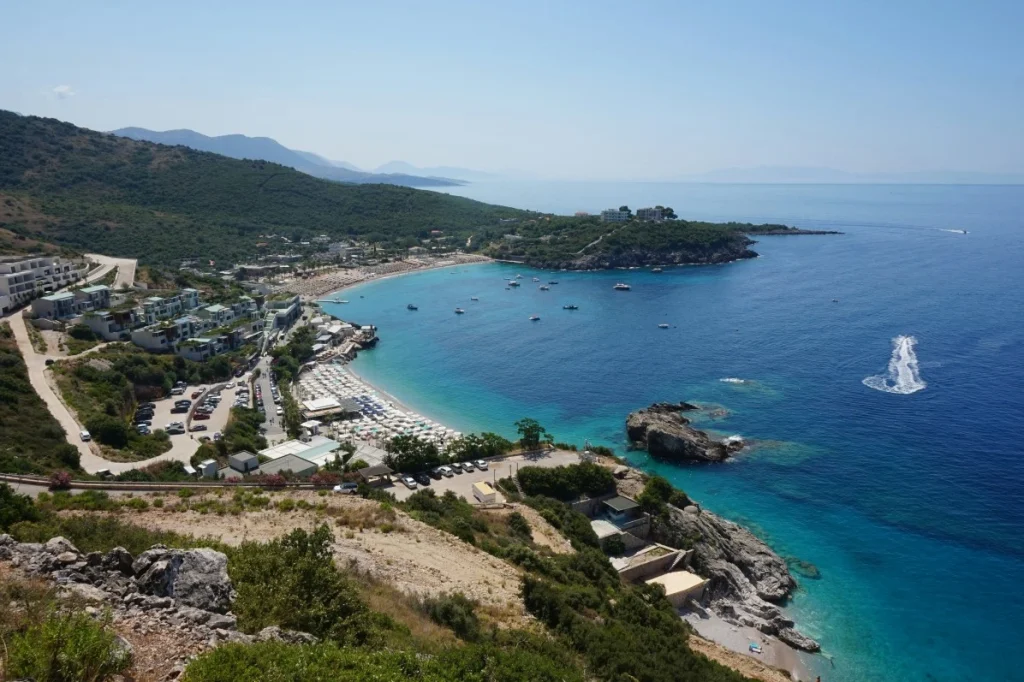
Tucked away along the Adriatic Sea lies a hidden gem – the Albanian Riviera. Unlike the more tourist-frequented beaches of Italy or Greece, this coastline feels like a dream: aquamarine waters that stretch infinitely, limestone cliffs that tumble dramatically into the sea, and sleepy villages that have somehow evaded the hustle and bustle of modernity. Imagine stepping off the winding coastal road, hearing only the lapping of the waves, and drinking a strong espresso beneath an olive tree aged at 150 years. This is what a holiday in Albania feels like – serene, authentic, and incredibly restorative. For travelers who love discovering hidden corners, The Tarzan Way, your personalized itinerary planner, can help map your journey along the Riviera, showing you spots that guidebooks often overlook. Whether you’re looking for peace and quiet, an adventure filled with history, or partying under the stars, you’re guaranteed something spectacular to latch on to and remember long after you have returned home. The Untouched Charm of the Albanian Riviera The charm of the Albanian Riviera is not only in the beauty of the views but also in the subtler rhythm of life: narrow pathways to navigate between stone homes with blue shutters, goats walk across quiet roads, and the locals greet you with a gentle nod. Villages perched on cliffs offer panoramas that make every photo look airbrushed. Beachside cafes serve coffee before conversation, making you feel part of the community instantly. The Ionian Sea shifts from turquoise to sapphire, changing its mood with the sun. Unlike the abandoned castles and ghost towns scattered across Europe, the Riviera feels alive – ancient yet thriving, timeless but welcoming. It’s a place that truly invites you to stop, breathe, and appreciate the details: a drying fishing net, a bare-footed child running down the beach, or a footpath along a cliff to an undiscovered cove. Must-Visit Stops Along the Albanian Riviera 1. Gjipe Beach – The Hidden Haven of Peace Gjipe Beach is exactly what its name promises: peace. To reach it, you hike down a steep cliffside trail, each step building anticipation for the untouched shoreline below. Arrive early in the morning to have the beach almost entirely to yourself. Smooth stones and gentle waves make it perfect for relaxing or swimming. Campers occasionally set up tents, but it never feels crowded. If you’re traveling with a dog, this is one of those rare beaches in Albania where pets are welcome – a quiet, sandy playground for four-legged companions. 2. Ancient Dhërmi – Where Time Sleeps on the Cliffs Dhërmi is a charming village that feels frozen in time. Walk its narrow stone streets covered with creeping grapevines, and you’ll see centuries-old architecture side by side with modern cafés. Hike up to the 6th-century Monastery of St. Theodore for panoramic cliff views. Explore the 4th-century BC fortress ruins and feel the weight of history under your feet. After the hike, descend to Dhërmi’s pristine beach for a well-earned swim. 3. Drymades – The Riviera’s Lively Heartbeat As the sun sets, Drymades transforms. The tranquil beach you walked along in the morning becomes a hub of energy by evening. Bonfires light up the sand, locals and travelers sway to a mix of folk and electronic music. Beach bars serve grilled seafood and local raki cocktails. Music floats over the waves, blending effortlessly with the sea breeze. While it’s not on the list of Europe’s glitziest clubs, Drymades has a charm all its own. For those planning a night out with an authentic vibe, it rivals many larger destinations. Explore our blog, Top 10 Clubs in Europe & Nightlife and How to Plan the Perfect Night Out in Europe to double your experience. 4. Ksamil Islands – Sarandë’s Secret Paradise Merely a brief boat trip from Sarandë Albania is Ksamil, a group of tiny islands that feels nearly otherworldly. The water is so clear that you can view your toes through the sand in the shallow spots, and local boats quietly move people to the three main islets: St. Nicholas, Basta, and Ksamil. Small taverns serve fresh seafood with views that steal your breath. Hidden coves offer privacy for swimming or sunbathing. Despite its popularity, it never feels overcrowded – the magic is in its secluded vibe. 5. Llogara Pass – The Scenic Gateway from Vlore to the Sea Vlore Albania serves as the gateway to the stunning Llogara Pass, a road trip dream. Winding through pine forests and climbing to 1,043 meters above sea level, every turn offers a new perspective of the Riviera below. Stop at scenic lookouts to watch the coastline stretch into the horizon. Hike through fragrant pine groves and spot golden eagles gliding overhead. Nearby, Llogara National Park is home to wild horses and over a thousand plant species. For travelers designing their Albania itinerary, combining mountains and coastline, The Tarzan Way can craft the perfect route that balances adventure and relaxation seamlessly. Local Tips for Exploring the Riviera Here’s what I’ve learned from wandering this stretch of coastline: Timing matters: Late May through early September is ideal – warm enough to swim, yet before the crowds peak. Travel slow: Don’t rush from town to town. Stay two nights in each place to truly soak it in. Road trips are gold: The SH8 coastal road is an ever-changing masterpiece of cliffs, turquoise water, and fragrant pine. Eat local: Try grilled octopus, byrek, and mountain honey – the simplest dishes taste like heaven here. Nightlife: Drymades and Dhërmi host authentic local gatherings, perfect for travelers who enjoy rhythm under the stars. FAQs About Visiting the Albanian Riviera 1. What’s the best time to visit the Albanian Riviera? Late May to early September, when the sun warms the sea and the villages are awake but not crowded. 2. How do I get to Ksamil from Sarandë or Vlore? Take the coastal SH8 road for scenic views, or hop on a local boat for a short and serene journey. 3. Are there budget options
Best Time to Visit Goa for Parties vs Peace
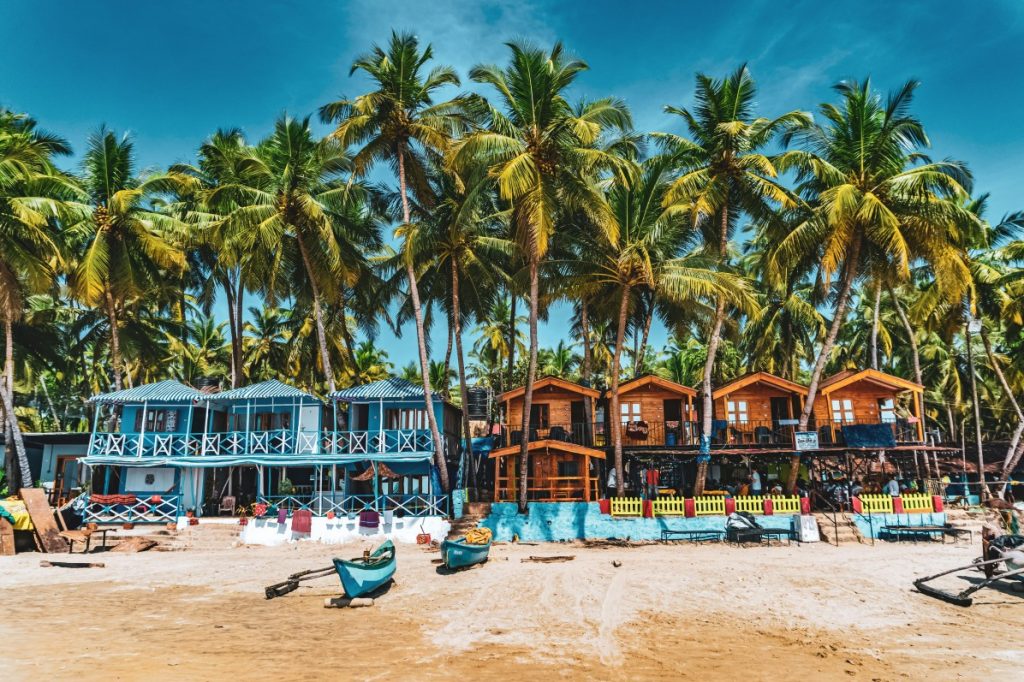
If you ask ten different travelers, “When’s the best time to visit Goa?” you’ll probably get ten different answers. For some, Goa means neon-lit beaches, buzzing nightclubs, and sunrise parties. For others, it’s sipping chai on a quiet shore, listening to waves instead of loudspeakers. The truth is – Goa has two faces. And the best time to visit depends on whether you’re chasing parties or peace. This blog will help you decide when to pack your bags for a vibrant Goa trip or a laid-back getaway. We’ll talk about seasons, experiences, stays, and even hidden gems. Along the way, I’ll also share a few insider links from other detailed guides (because Goa is too big for one blog!). And if planning feels overwhelming, you can always try The Tarzan Way, an AI-powered personalized travel itinerary planner that builds your Goa itinerary around your vibe – whether you’re a party animal or a peace-seeker. Goa for Parties – The Vibrant Side When people think of Goa tourism, the first thing that pops into mind is its electrifying nightlife. From December to January, Goa turns into a carnival of music, dance, and endless celebrations. Best time for parties: November – February December & New Year’s Eve → The most happening season, but also the most crowded and expensive. Sunburn Festival (usually in December) → Asia’s biggest electronic dance music festival. Christmas Week → Goa turns into a non-stop party zone. Must-try experiences for party lovers: Clubbing hotspots: Tito’s, Mambo’s, and LPK Waterfront. Beach parties: Anjuna, Vagator, and Baga beaches. Late-night cafes: Curlies and Shiva Valley. This is where Goa nightlife really shines. If you’re wondering about the things to do in Goa at night besides clubbing, try a night cruise on the Mandovi River or a midnight beach walk. For a detailed look at the party scene, check out our blog Goa’s Nightlife: A Guide to the Lit Nightlife. Goa for Peace – The Serene Side Now, let’s flip the coin. Beyond the rave music and crowds, Goa hides a quieter, soulful personality. If your idea of travel is watching sunsets, practicing yoga, or strolling along empty beaches, you’ll love the off-season. Best time for peace: June – September (monsoon) or October – early November Monsoons bring lush greenery, waterfalls, and far fewer tourists. October is shoulder season – less crowded, but still great weather. Where to find peace: South Goa → Palolem, Agonda, and Colva beaches are serene and less commercial. Hidden beaches → Butterfly Beach, Kakolem Beach (worth the trek!). Retreats → Yoga, meditation, and Ayurveda centers across Goa. If you’re traveling with family, you’ll love the family-friendly beaches in Goa – they’re cleaner, calmer, and safer for kids. For a deeper dive, explore our guides: Best Hidden Beaches in Goa for Peaceful Escape!! South Goa Unplugged: Exploring the Quieter Side Parties vs Peace: When Should You Go? Here’s a quick breakdown so you can match your vibe to the right season: For Parties (Peak Season: Nov–Feb): Bustling nightlife International tourists Higher prices for flights & stays Packed beaches For Peace (Monsoon & Shoulder Season): Quiet beaches and roads Lush green landscapes Affordable stays Perfect for slow travelers & families If you’re building a Goa itinerary, think about what matters more to you: dancing till dawn or waking up to the sound of waves with no one around. Our guide Top Attractions to Include in Your Goa Travel Itinerary can help you mix both worlds. Where to Stay – Party vs Peace The type of accommodation you choose will also depend on your vibe. For Party Lovers: Beachfront resorts in North Goa → Perfect for quick access to clubs and bars. Party hostels → Zostel, The Bucket List Hostel, and other backpacker hostels keep the fun going. Luxury villas → If you’re with a group, renting a villa near Baga or Anjuna keeps you close to the nightlife. For Peace Seekers: Budget-friendly hotels in North Goa → Tucked away from crowds but still accessible. South Goa resorts → More private, surrounded by nature. Heritage stays → Portuguese-style villas or boutique homestays. Whether you’re eyeing Goa resorts for a luxurious vibe or cozy Goa hotels for affordability, Goa has it all. Curious about combining work and leisure? Check out 13 Best Places to Have an Amazing Workation in Goa. Planning Your Goa Trip Now, here’s the tricky part – planning. Should you go for Goa packages or build your own? Packages are convenient, but they often stick to touristy spots. If you prefer something unique, creating your own itinerary might be better. That’s where The Tarzan Way can help again. It’s designed to personalize your Goa trip – whether you want bar-hopping nights or lazy beach mornings. (And yes, it saves you from endlessly scrolling Google Maps!). FAQs 1. What is the best time to visit Goa for nightlife? The peak season from November to February is best for experiencing Goa nightlife, especially December during Christmas and New Year. 2. Which season is best for a peaceful Goa trip? The monsoon (June–September) and shoulder season (October) are perfect for peaceful, crowd-free travel. 3. Are there budget-friendly hotels in North Goa near the beach? Yes, North Goa has plenty of budget-friendly hotels close to beaches like Anjuna, Vagator, and Morjim. 4. What are the top things to do in Goa at night apart from clubs? Try night markets, beach bonfires, midnight cruises, and live music events for non-clubbing fun. 5. Which are the best family-friendly beaches in Goa? Palolem, Agonda, and Colva beaches in South Goa are family-friendly and safer for kids. 6. Should I book Goa packages or plan my own trip? Packages are good for convenience, but planning your own gives more flexibility and lets you discover offbeat places. 7. How many days are enough for a Goa itinerary? A 4–5 day Goa itinerary is ideal for exploring both North and South Goa comfortably. 8. What is cheaper: staying in Goa hotels or Goa resorts? Goa hotels are
Best Time to Visit Bali for Beaches & Culture
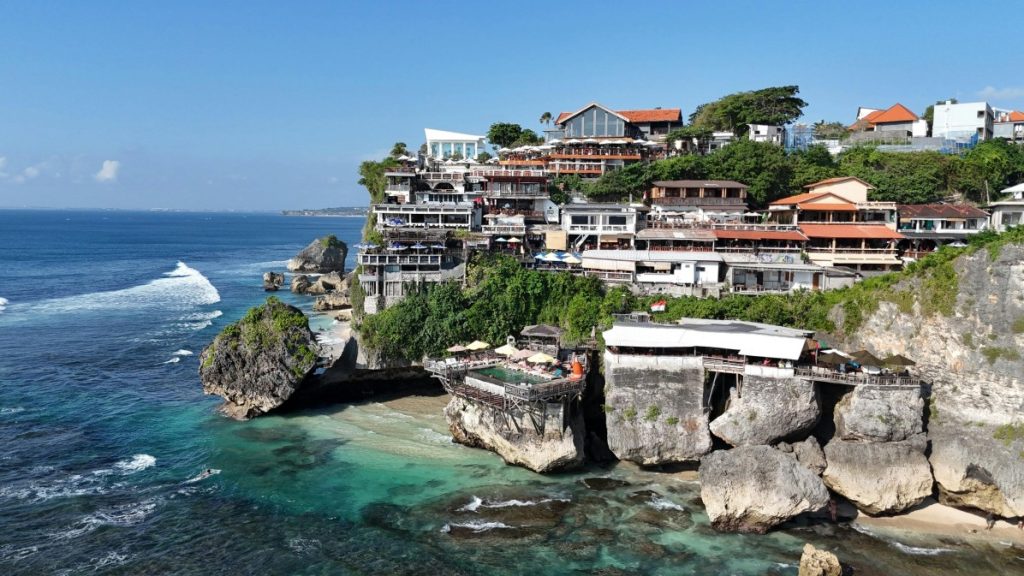
Bali effortlessly sparks your creativity. You can find golden beaches, emerald rice terraces, colorful temples, and fun festivals to keep any traveler entertained. When it comes to your ideal Bali, timing is important; the right season will allow your beaches to sparkle, your cultural experiences to deepen, and your holiday to remain stress-free. If you are a first timer, this guide is for you! We will give you the best time to visit Bali, weather breakdown by month, festival calendar, avoiding crowds, and other travel advice to plan your trip using The Tarzan Way, your AI-powered personalized trip planner. Bali Weather by Month: A Quick Overview Getting to know the weather in Bali is the first step for your trip planning. There are two main seasons in Bali: Dry Season vs Wet Season Dry Season (April to September): This is the sunniest time, perfect if you want to spend a lot of time on the beach, enjoy outdoor activities, and visit temples. You can expect clear blue skies, flat seas, and little rain. Wet Season (October to March): Expect heavy rainfall, humidity, and occasional storms. Don’t worry though—rain usually does not last long. Bali is still beautiful, just a little wetter. Pro Tip: Even in the wet season, mornings are often sunny, making it possible to enjoy sightseeing before the afternoon showers. Best Time to Visit Bali for Beaches If your main goal is lounging on soft sand, surfing, or snorkeling, timing is everything. Peak Beach Season: April to October Calm seas, clear waters, and sunny skies dominate. Popular beaches like Kuta, Seminyak, and Nusa Dua are at their best. Perfect for surfing beginners and experienced surfers alike. Best Months for Bali Beaches: July, August, and September—sunny days with gentle waves. Surfing Tip: The west coast is great from May to September, while the east coast shines from November to March. If you want to catch epic waves, check out The Tarzan Way’s surf-focused itineraries for personalized guidance. Best Time to Visit Bali for Culture Bali is more than just beaches; it is a living, breathing cultural gem. There are temples, ceremonies, and festivals everywhere, and scheduling your visit can change everything. Bali Festival Season: March to October Galungan & Kuningan: Celebrate the triumph and balance of good over evil with temple ceremonies, dances, and colorful offerings. Nyepi (Balinese New Year): A fascinating experience when the whole island honors a day of silence. Streets are deserted, flights are suspended, and a spiritual reset takes place unlike anywhere else in the world. Visiting Bali during Nyepi Festival: If you love culture, it’s worth timing your trip around this festival—but plan ahead since transport and activities are limited. The Tarzan Way can help schedule your activities perfectly around Nyepi for a truly immersive experience. Bali Crowds and Tourist Season Peak Season (July–August, Christmas–New Year): Expect busy beaches, higher hotel rates, and full attractions. Shoulder Season (April–June, September–October): Fewer crowds, pleasant weather, and great for photography. Off-Peak/Wet Season (January–March): Less crowded, more budget-friendly, but some rain expected. Cheapest Time to Visit Bali: January, February, and early March—perfect for travelers seeking deals and fewer crowds. Month-by-Month Guide: Bali Weather & Activities Month Weather Beach Activities Cultural Highlights January Wet, occasional storms Swimming limited Temple visits, indoor workshops February Wet, humid Low tourist crowds Local festivals, rice terrace walks March Transition to dry Surfing picks up Galungan preparations April Dry begins Ideal for beaches Temple ceremonies May Dry, sunny Snorkeling, diving Art festivals June Dry, cooler mornings Surfing, beach hopping Cultural tours July Dry, peak season Surfing, sunbathing Local performances August Dry, sunny Beach sports & surfing Ubud arts events September Dry, warm Perfect for beaches Temple visits October Dry to wet transition Surfing possible Festival season ends November Wet begins Limited beach time Temple ceremonies December Wet, humid Beaches less ideal Christmas celebrations, indoor activities Tips for First-Timers Visiting Bali Plan your beaches and cultural visits separately. Sunny mornings for temples, afternoons for beaches. Book accommodation early during peak months to avoid inflated prices. Use The Tarzan Way to customize your itinerary based on your interests and preferred timing. Pack for unpredictable weather if traveling during the wet season. A light raincoat and waterproof shoes are lifesavers. Frequently Asked Questions Q1. What is the best month to visit Bali? For first-timers, April to September is ideal for sunny beaches and cultural exploration. July and August are peak season months with vibrant festivals. Q2. Is Bali worth visiting during the rainy season? Yes! While it rains more, the island is lush and less crowded. Indoor activities, temples, and cultural tours remain accessible. Q3. Which season is best for experiencing Balinese culture? Dry season (April–September) is perfect. Festivals like Galungan and Nyepi happen around this time, offering an authentic cultural experience. Q4. When is the cheapest time to travel to Bali? January to early March is budget-friendly with fewer tourists. Hotels and flights are cheaper. Q5. Is July a good time to visit Bali? Absolutely! It’s sunny, perfect for beaches, and festival season is in full swing. Just expect more crowds. Q6. What is Nyepi Festival and should I plan my trip around it? Nyepi is the Balinese Day of Silence marking the new year. It’s unique, peaceful, and spiritual. If you plan carefully, it’s a one-of-a-kind cultural experience. Q7. Is Bali good for surfing year-round? Yes, but the west coast is best May–September, and the east coast shines November–March. Personalized surf itineraries are available through The Tarzan Way. Q8. How many days are enough for a Bali trip? A 7–10 day trip lets you cover beaches, cultural spots, and a couple of nearby islands comfortably. Q9. Is Bali too crowded during peak season? It can be busy, especially Kuta and Seminyak. Visiting during shoulder months like April–June or September–October ensures fewer crowds. Planning Your Bali Adventure the Smart Way Choosing the best time to visit Bali depends on your priorities—beaches, culture, or budget. For first-timers, the dry season between April and September offers the



